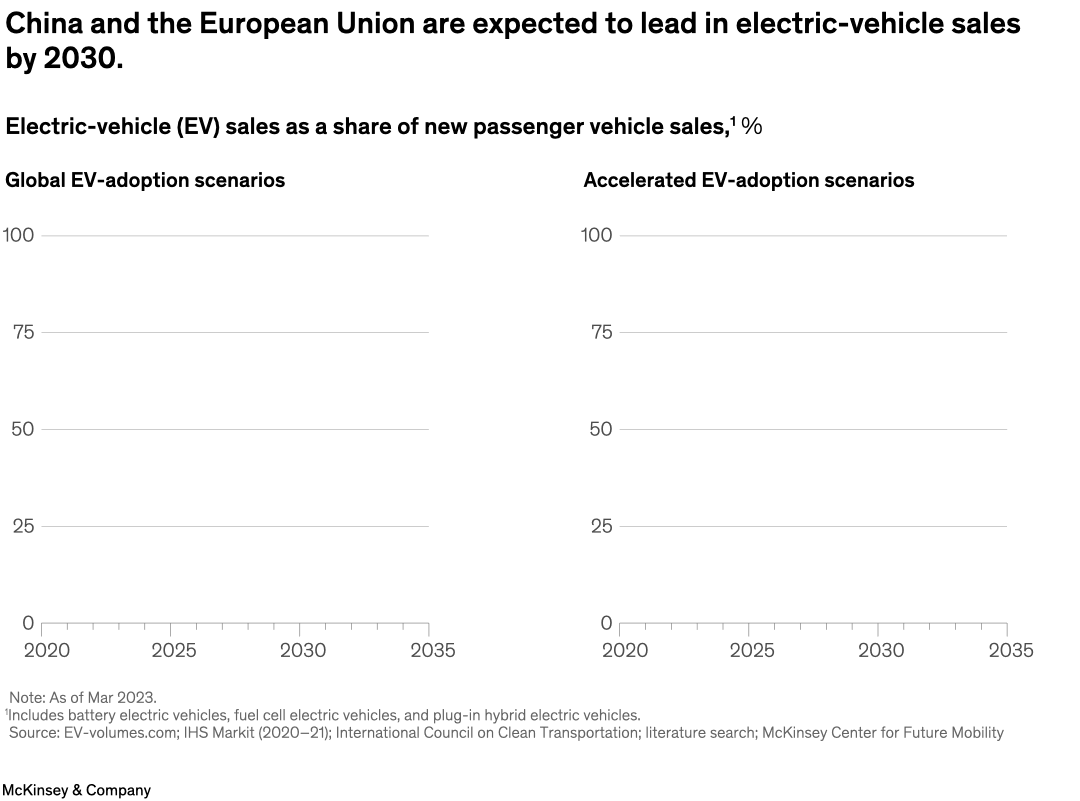Electric-vehicle (EV) sales have sped up over the last couple of years. Between 2020 and 2022, EV sales grew by more than 90 percent in both the United States and Europe and by more than 300 percent in China. According to partner Patrick Schaufuss and coauthors, by 2035, EVs will likely account for more than 65 percent of all new light-vehicle sales across the global automotive market—creating both pressure and opportunities for powertrain suppliers.

Image description:
A pair of line graphs show the projected percentage of electric-vehicle (EV) sales as a share of new passenger vehicles. The left-side graph shows a variety of EV scenario projections, with only 1 showing completely achieved commitments reaching 100% saturation for EVs by 2035. This graph also shows a line for the current projection: EVs at ~70% of passenger sales by 2030. The right-side graph shows projections for accelerated adoption scenarios only and also shows the projections for 3 different countries or regions, with the EU as the most likely to reach 100% saturation by 2030, followed by China at ~90% and the US at ~60%. Note: As of Mar 2023.
Footnote 1: Includes battery electric vehicles, fuel cell electric vehicles, and plug-in hybrid electric vehicles.
Source: EV-volumes.com; IHS Markit (2020–21); International Council on Clean Transportation; literature search; McKinsey Center for Future Mobility
End of image description.
To read the article, see “Automotive powertrain suppliers face a rapidly electrifying future,” March 31, 2023.